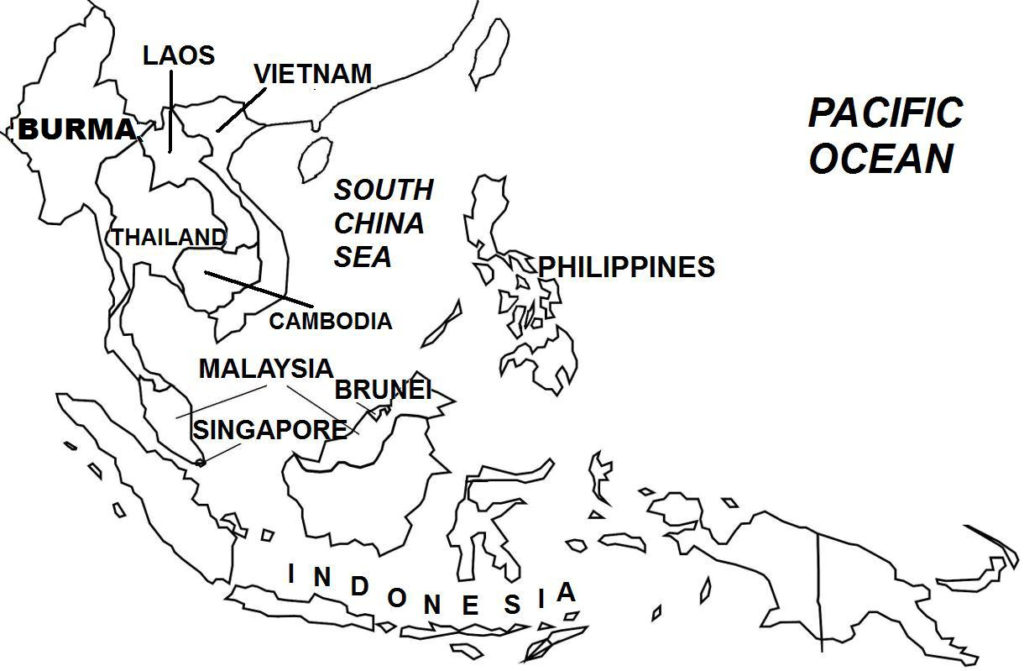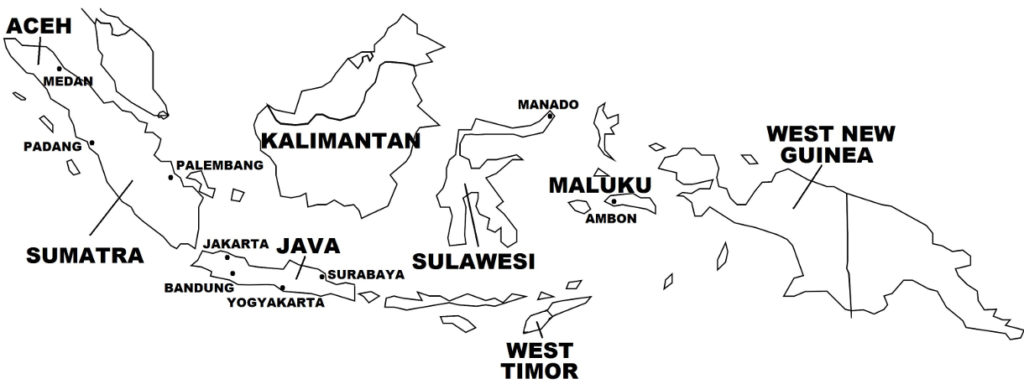On January 17, 1948, representatives of the Netherlands and Indonesian revolutionaries signed the Renville Agreement (named after the USS Renville, a U.S. Navy ship where the negotiations were held), which confirmed their respective territories in the Van Mook Line, and in the Dutch-held areas, a referendum would be held to decide whether the residents there wanted to be under Indonesian or Dutch control. Furthermore, in exchange for Indonesian forces withdrawing from Dutch-held areas as stipulated in the Van Mook Line, the Dutch Navy would end its blockade of the ports.

The Indonesian Republic, already weakened politically and militarily, was undermined further when its Islamic supporters in now Dutch-controlled West Java objected to the Renville Agreement and broke away to form Darul Islam (“Islamic State”), with the ultimate aim of turning Indonesia into an Islamic country. It opposed both the Indonesian government and Dutch colonial authorities. Darul Islam subsequently would be defeated only in 1962, some 13 years after the war had ended.
The Indonesian Republic also faced opposition from its other erstwhile allies, the communists (of the Indonesian Communist Party) and the socialists (of the Indonesian Socialist Party), who in September 1948, seceded and formed the “Indonesian Soviet Republic” in Madiun, East Java. Fighting in September-October and continuing until December 1948 eventually led to the Indonesian Republic quelling the Madiun uprising, with tens of thousands of communists killed or imprisoned and their leaders executed or forced into exile. Furthermore, the Indonesian Army itself was plagued with internal problems, because the government, suffering from acute financial difficulties and unable to pay the soldiers’ salaries, had disbanded a number of military units.

(Taken from Wars of the 20th Century – Twenty Wars in Asia)
Indonesian War of Independence Sukarno’s proclamation of Indonesia’s independence de facto produced a state of war with the Allied powers, which were determined to gain control of the territory and reinstate the pre-war Dutch government. However, one month would pass before the Allied forces would arrive. Meanwhile, the Japanese East Indies command, awaiting the arrival of the Allies to repatriate Japanese forces back to Japan, was ordered by the Allied high command to stand down and carry out policing duties to maintain law and order in the islands. The Japanese stance toward the Indonesian Republic varied: disinterested Japanese commanders withdrew their units to avoid confrontation with Indonesian forces, while those sympathetic to or supportive of the revolution provided weapons to Indonesians, or allowed areas to be occupied by Indonesians. However, other Japanese commanders complied with the Allied orders and fought the Indonesian revolutionaries, thus becoming involved in the independence war.
In the chaotic period immediately after Indonesia’s independence and continuing for several months, widespread violence and anarchy prevailed (this period is known as “Bersiap”, an Indonesian word meaning “be prepared”), with armed bands called “Pemuda” (Indonesian meaning “youth”) carrying out murders, robberies, abductions, and other criminal acts against groups associated with the Dutch regime, i.e. local nobilities, civilian leaders, Christians such as Menadonese and Ambones, ethnic Chinese, Europeans, and Indo-Europeans. Other armed bands were composed of local communists or Islamists, who carried out attacks for the same reasons. Christian and nobility-aligned militias also were organized, which led to clashes between pro-Dutch and pro-Indonesian armed groups. These so-called “social revolutions” by anti-Dutch militias, which occurred mainly in Java and Sumatra, were motivated by various reasons, including political, economic, religious, social, and ethnic causes. Subsequently when the Indonesian government began to exert greater control, the number of violent incidents fell, and Bersiap soon came to an end. The number of fatalities during the Bersiap period runs into the tens of thousands, including some 3,600 identified and 20,000 missing Indo-Europeans.
The first major clashes of the war occurred in late August 1945, when Indonesian revolutionary forces clashed with Japanese Army units, when the latter tried to regain previously vacated areas. The Japanese would be involved in the early stages of Indonesia’s independence war, but were repatriated to Japan by the end of 1946.
In mid-September 1945, the first Allied forces consisting of Australian units arrived in the eastern regions of Indonesia (where revolutionary activity was minimal), peacefully taking over authority from the commander of the Japanese naval forces there. Allied control also was established in Sulawesi, with the provincial revolutionary government offering no resistance. These areas were then returned to Dutch colonial control.
In late September 1945, British forces also arrived in the islands, the following month taking control of key areas in Sumatra, including Medan, Padang, and Palembang, and in Java. The British also occupied Jakarta (then still known, until 1949, as Batavia), with Sukarno and his government moving the Republic’s capital to Yogyakarta in Central Java. In October 1945, Japanese forces also regained control of Bandung and Semarang for the Allies, which they turned over to the British. In Semarang, the intense fighting claimed the lives of some 500 Japanese and 2,000 Indonesian soldiers.
